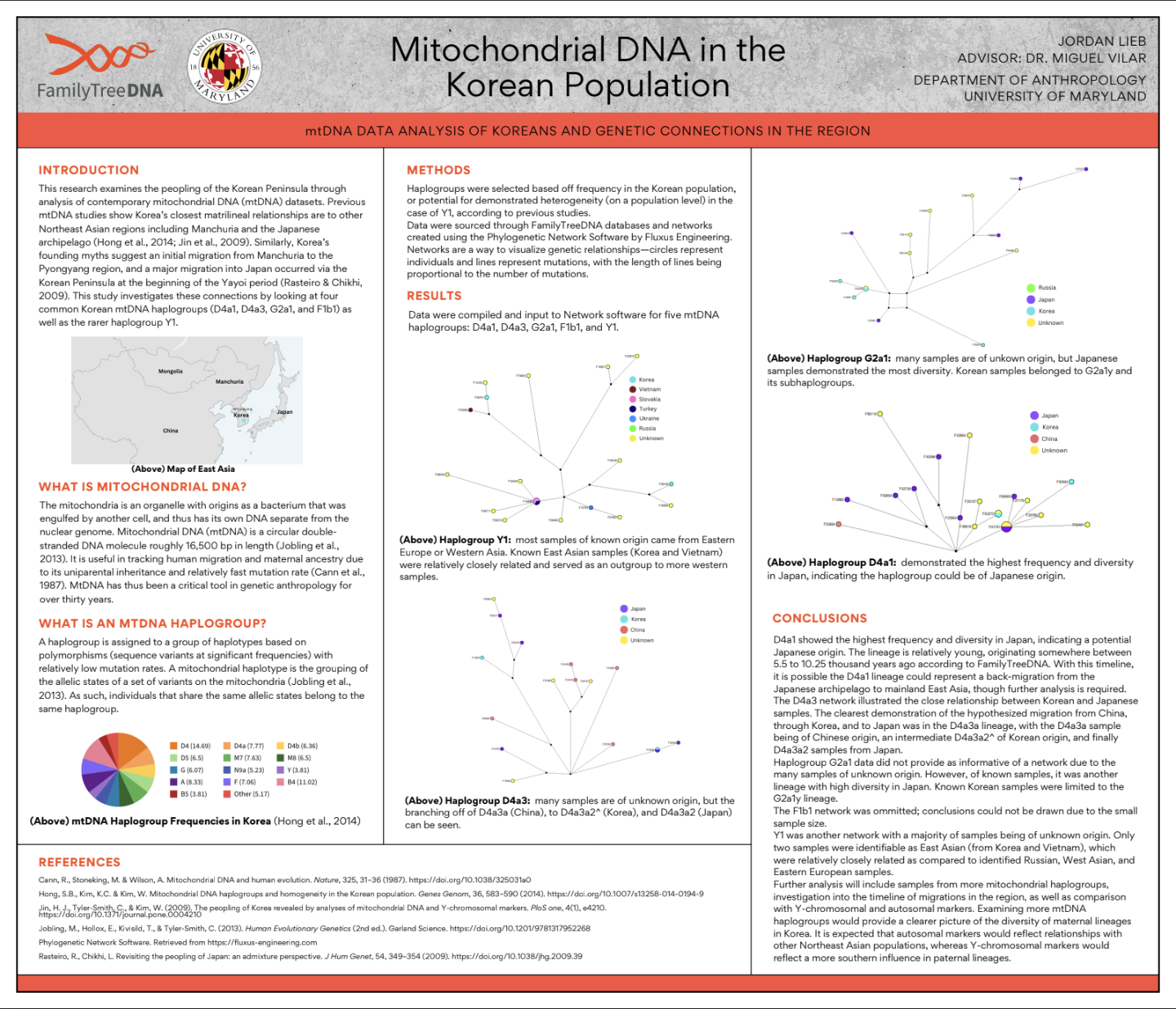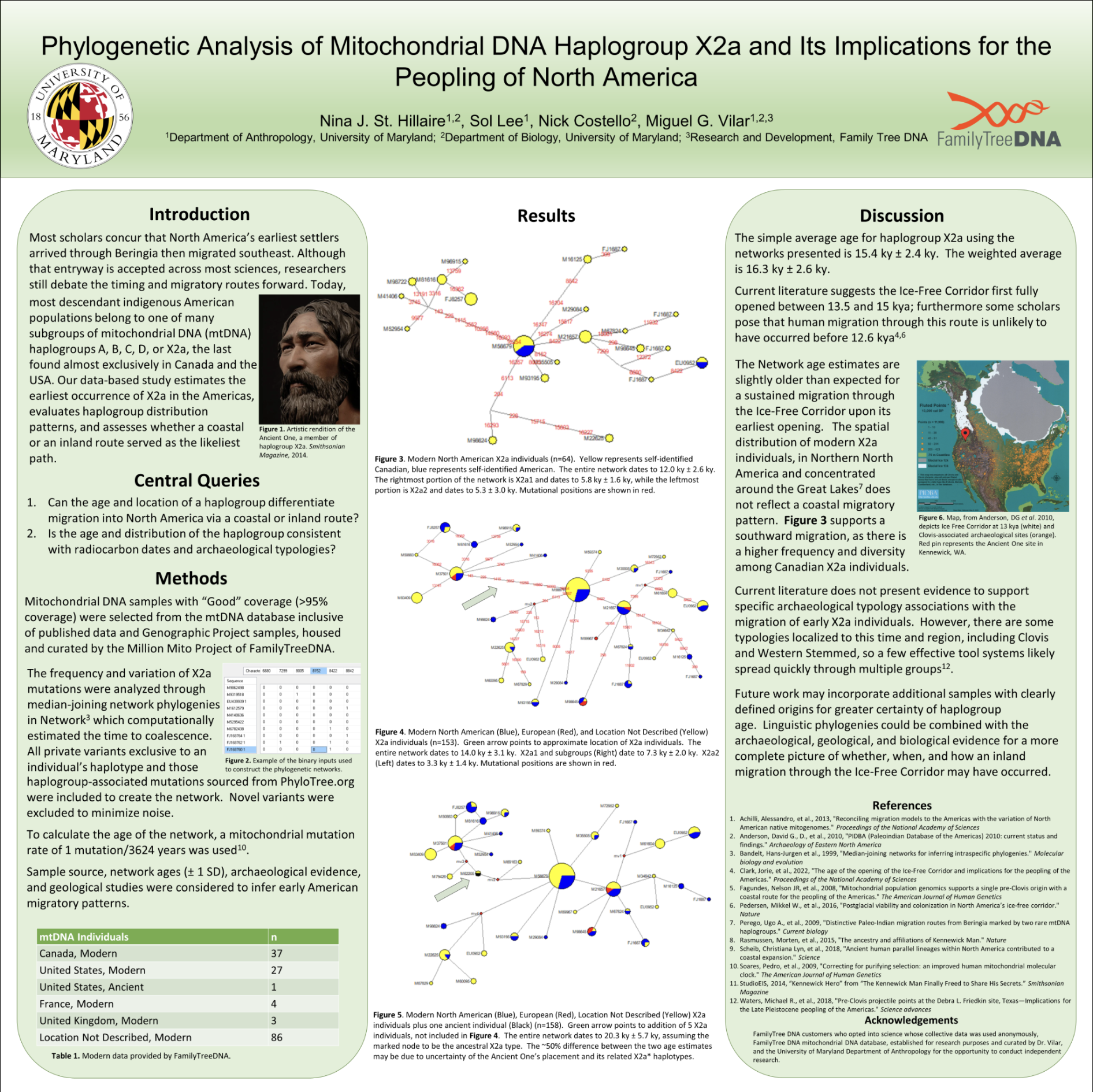
Jordan Lieb
Jordan used contemporary country-level haplogroup frequencies to study ancient migration into the Korean peninsula.

Mateo Rojas
Mateo used modern haplogroup frequency around the northern portion of South America to calculate the time to their most recent common ancestor (TMRCA) to use a metric for migration/dispersion from Central America into South America.

Mia Tomeo
Mia combined modern/ancient mtDNA, geography, and existing archaeological research to propose two likely migration routes from the middle east into Europe.

Sol Lee
Sol used country-level haplogroup frequencies and phylogenetic networks to investigate the ancient migration of people into Japan. The concentrations of two prominent haplogroups were used to estimate a split between the populations about 4000 years ago.

Nina St Hillaire
Nina used contemporary mtDNA samples to create a phylogenetic network that showed, genetically, humans may have migrated to Canada earlier than indicated by archaeological evidence.
